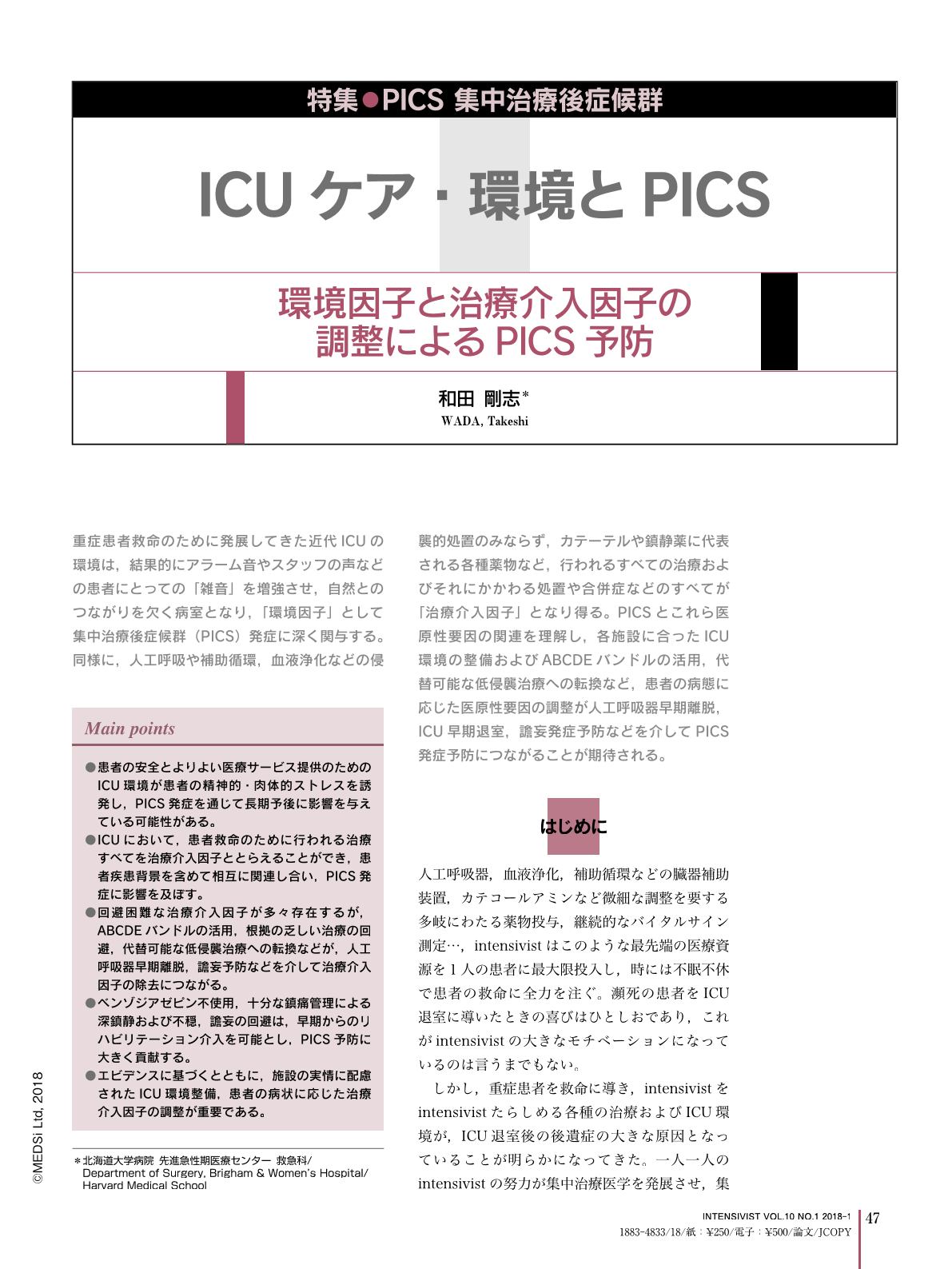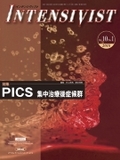Japanese
English
- 有料閲覧
- Abstract 文献概要
- 1ページ目 Look Inside
- 参考文献 Reference
重症患者救命のために発展してきた近代ICUの環境は,結果的にアラーム音やスタッフの声などの患者にとっての「雑音」を増強させ,自然とのつながりを欠く病室となり,「環境因子」として集中治療後症候群(PICS)発症に深く関与する。同様に,人工呼吸や補助循環,血液浄化などの侵襲的処置のみならず,カテーテルや鎮静薬に代表される各種薬物など,行われるすべての治療およびそれにかかわる処置や合併症などのすべてが「治療介入因子」となり得る。PICSとこれら医原性要因の関連を理解し,各施設に合ったICU環境の整備およびABCDEバンドルの活用,代替可能な低侵襲治療への転換など,患者の病態に応じた医原性要因の調整が人工呼吸器早期離脱,ICU早期退室,譫妄発症予防などを介してPICS発症予防につながることが期待される。
Main points
●患者の安全とよりよい医療サービス提供のためのICU環境が患者の精神的・肉体的ストレスを誘発し,PICS発症を通じて長期予後に影響を与えている可能性がある。
●ICUにおいて,患者救命のために行われる治療すべてを治療介入因子ととらえることができ,患者疾患背景を含めて相互に関連し合い,PICS発症に影響を及ぼす。
●回避困難な治療介入因子が多々存在するが,ABCDEバンドルの活用,根拠の乏しい治療の回避,代替可能な低侵襲治療への転換などが,人工呼吸器早期離脱,譫妄予防などを介して治療介入因子の除去につながる。
●ベンゾジアゼピン不使用,十分な鎮痛管理による深鎮静および不穏,譫妄の回避は,早期からのリハビリテーション介入を可能とし,PICS予防に大きく貢献する。
●エビデンスに基づくとともに,施設の実情に配慮されたICU環境整備,患者の病状に応じた治療介入因子の調整が重要である。
Modern intensive care units (ICUs) have been developed exclusively toward the ultimate goal of saving the lives of critically ill patients. Therefore, environmental conditions in the ICU are distinct from those in the general ward or an ordinary residence, devoid of access to the natural environment, but full of noises created by monitoring alarms, medical staff and families. These conditions are associated with the development of postintensive care syndrome (PICS). Along with these “environmental factors”, “treatment factors” from pharmacological and mechanical interventions including sedation, mechanical ventilation, circulatory support, blood purification and complications from the interventions are also associated with the development of PICS. Understanding the relationship between these iatrogenic factors and the development of PICS is essential. To optimize these iatrogenic factors according to the patients' condition including modification of the ICU environment, use of ABCDE bundles, and choice of less invasive treatments may lead to the prevention of PICS through delirium management, early liberation from the ventilator, and early discharge from the ICU.

Copyright © 2018, MEDICAL SCIENCES INTERNATIONAL, LTD. All rights reserved.


